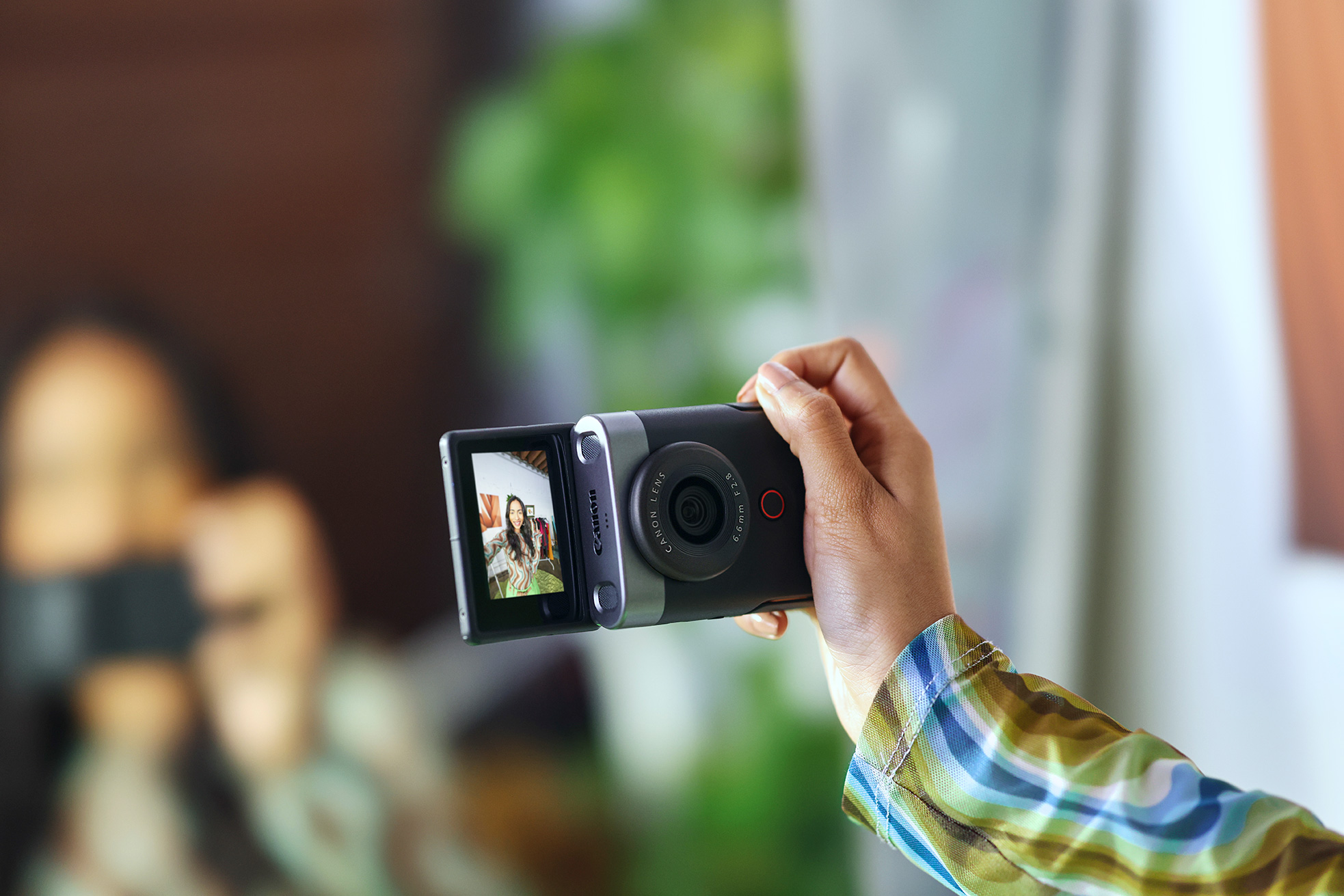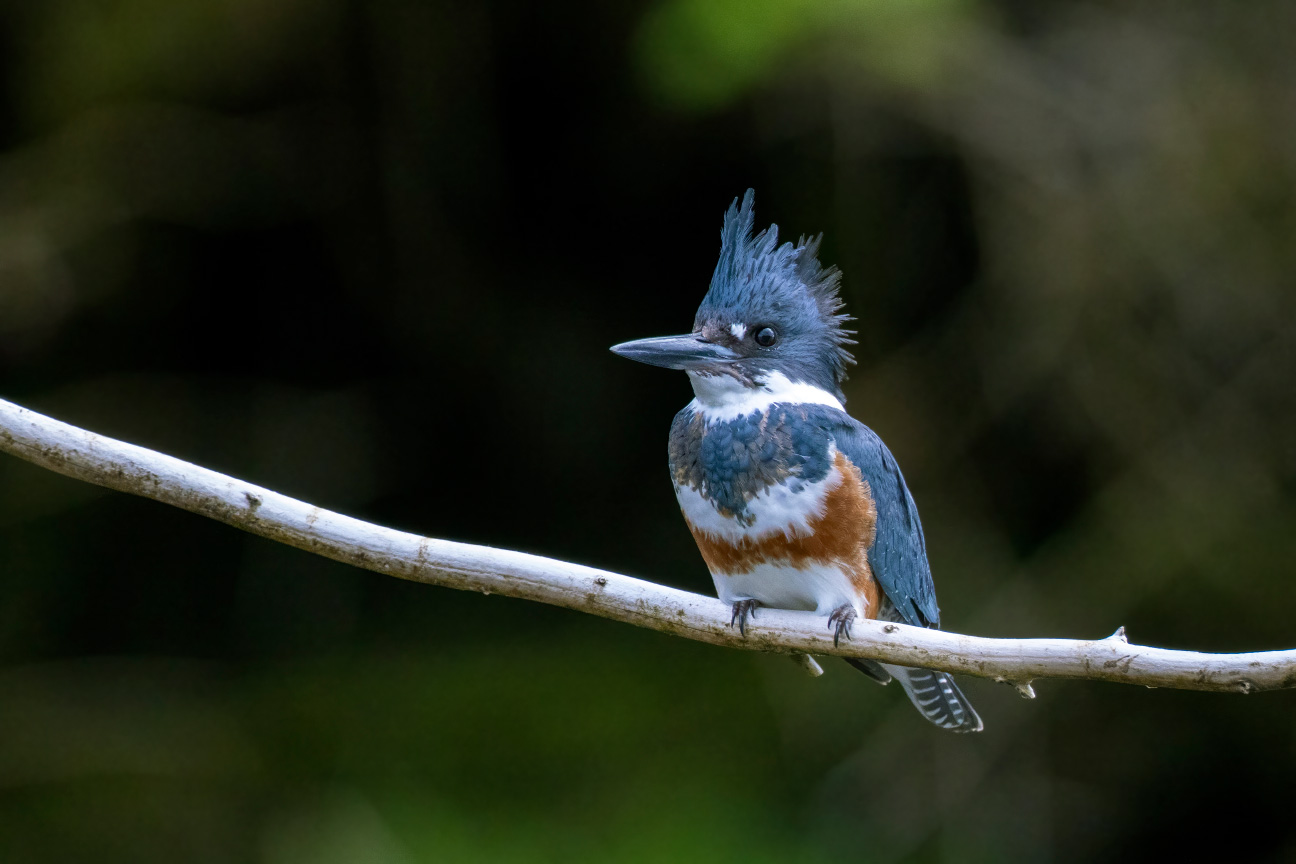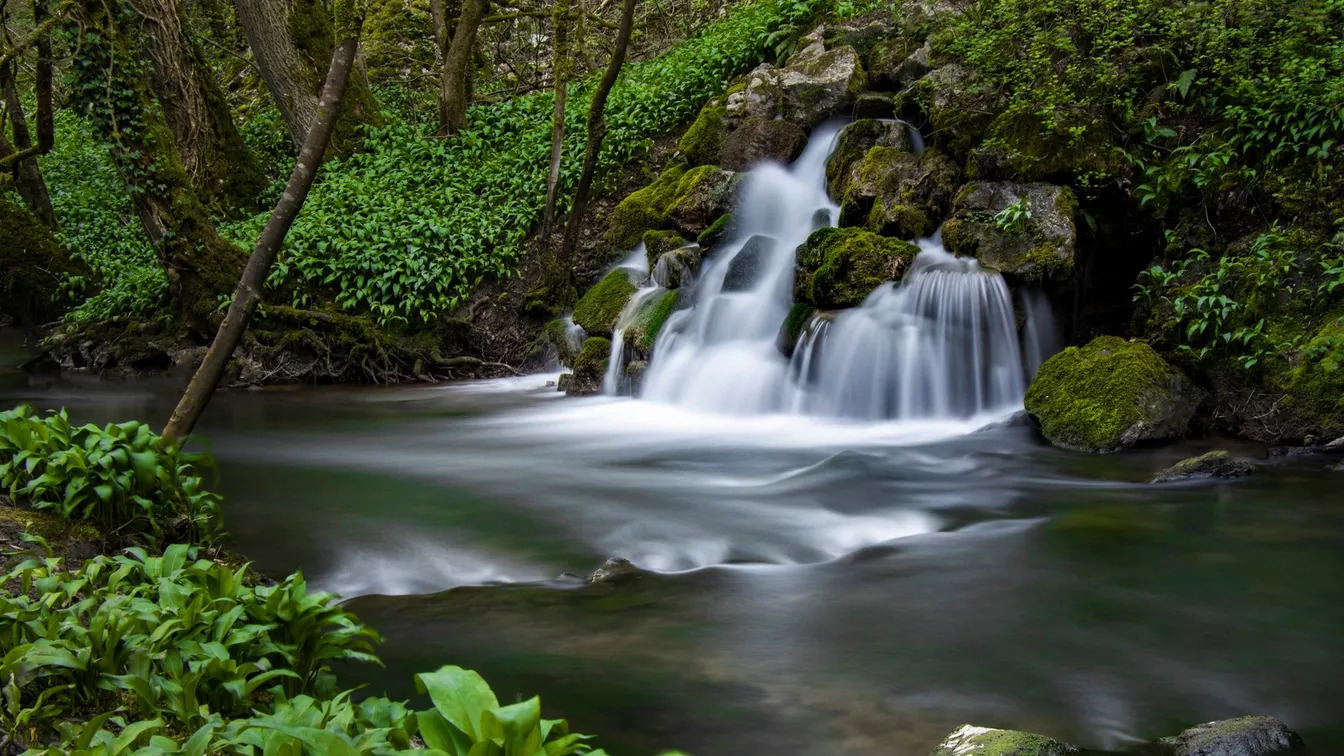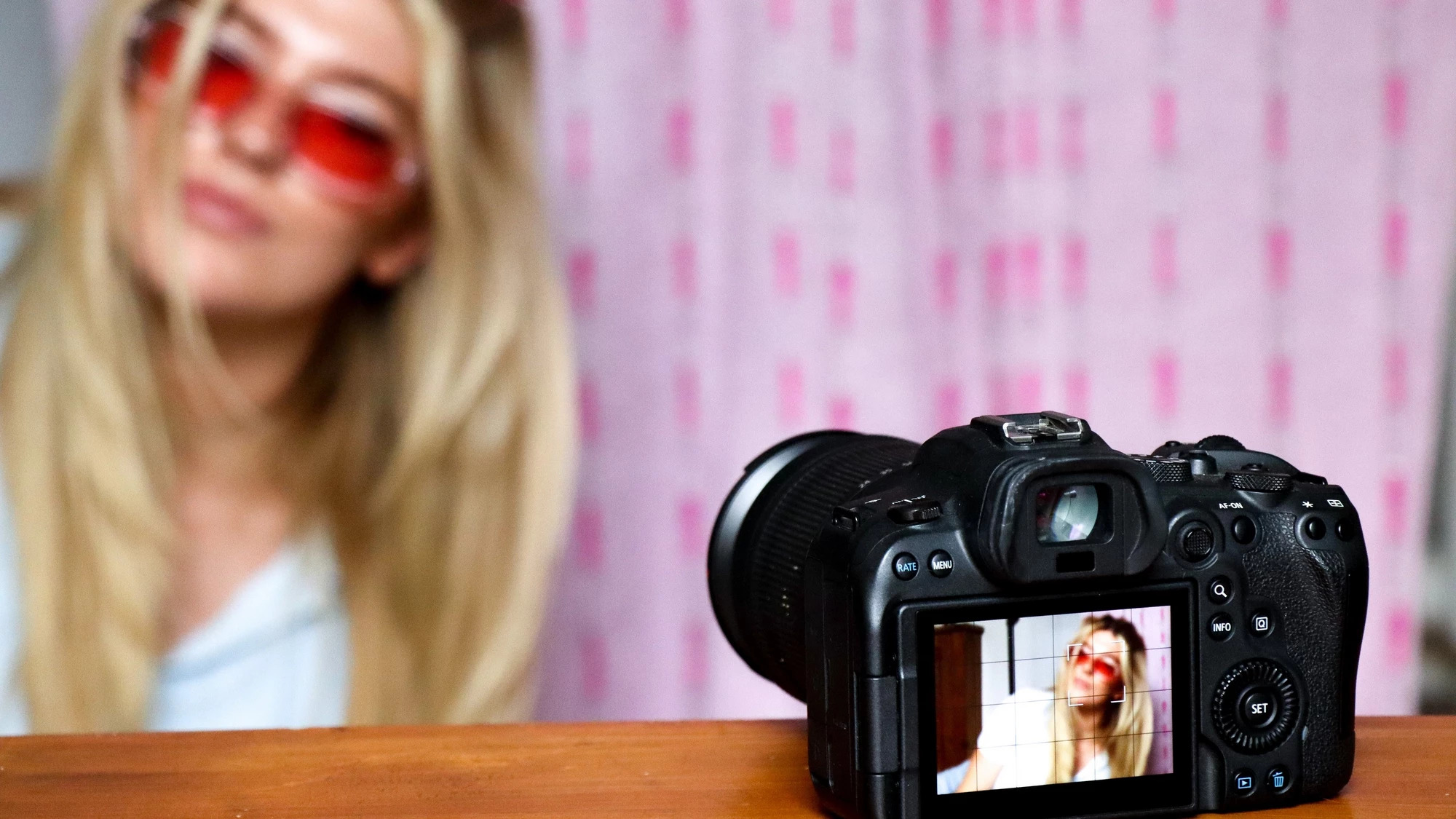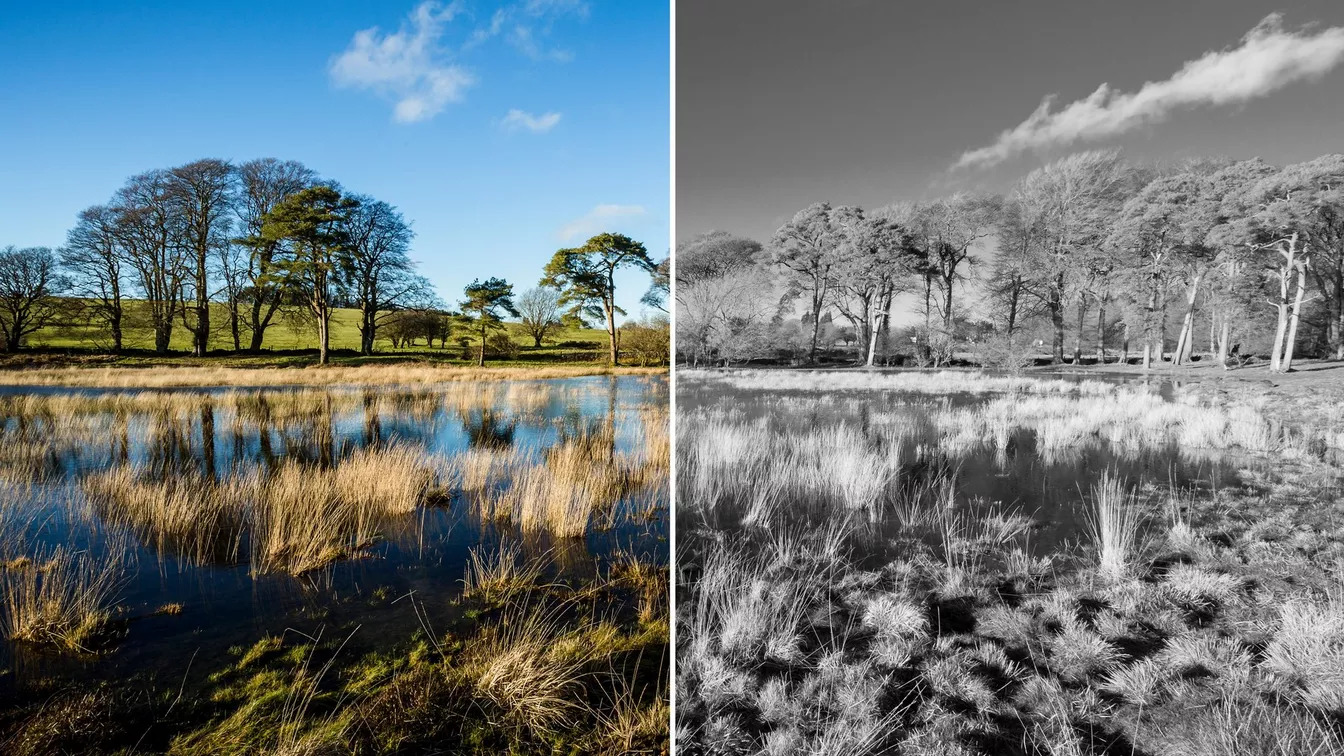Starting a vlog is fun, rewarding and easier than ever – especially if you follow our expert tips for creating better quality, more effective vlogs.
You’ve found your niche, a beautiful location, and a compelling story. You may think that’s the recipe for the perfect vlog, but do you know what kit to choose and how to film your video to a high enough standard to please savvy audiences?
In this vlogging how-to, we reveal eight tips that can help both beginners and experienced vloggers improve their vlogs. Find out how you can produce quality vlogs that will keep your viewers coming back for more – how to get steady (shake-free) and sharp footage, the importance of creative framing, and what you need to capture crisp and clear sound. Whatever your vlogging camera, whether you’re shooting on a Canon PowerShot V10, a Canon EOS R100, a Canon EOS R7 or a Canon EOS R6 Mark II, here are the things to consider when creating your first vlogs.
1. When choosing kit, balance camera and sensor size
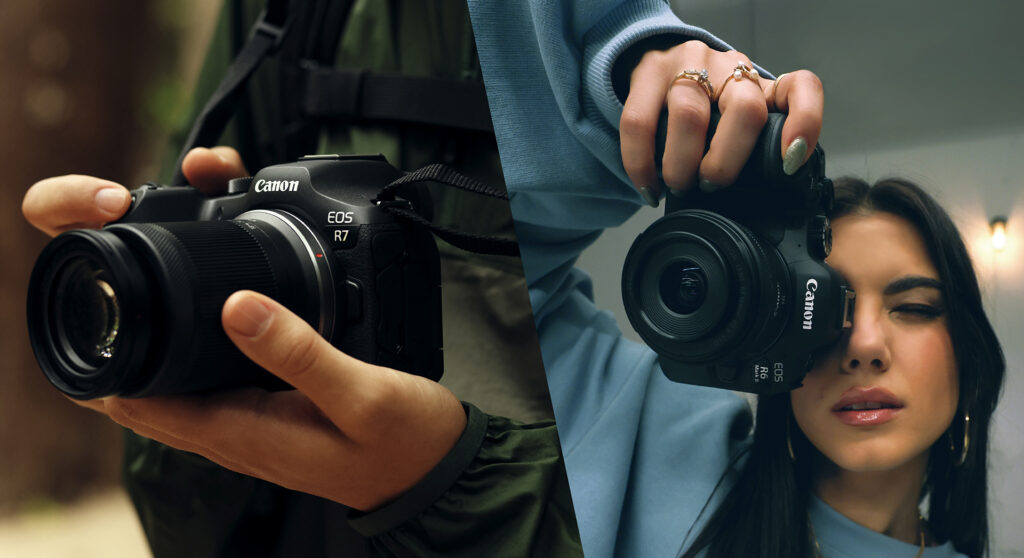
Canon full-frame sensors are 1.6x larger than APS-C sensors. This means that an APS-C camera such as the EOS R7 (left) gives a tighter view than a full-frame camera such as the EOS R6 Mark II (right) fitted with the same lens, with a “crop factor” of 1.6x – so a full-frame 24mm lens on an APS-C camera results in a 38.4mm field of view.
2. Best lenses for vlogging
Many vloggers favour wide-angle lenses because they can be used in tight spaces such as a bedroom or kitchen to show as much of the scene as possible. A 24mm lens is good for that purpose, but an ultra-wide lens – one with an effective focal length of less than 24mm – is even better.
So if you’re shooting with an APS-C camera such as the Canon EOS R100, pairing it with an ultra-wide-angle zoom lens such as the Canon RF15-30mm F4.5-6.3 IS STM means you can fit more into the frame.
For full-frame EOS R System cameras such as the Canon EOS R6 Mark II or EOS RP, the RF 15-30mm F4.5-6.3 IS STM is a compact, quiet, easy-to-use lens that offers a similar ultra-wide field of view. DSLR users might opt for the Canon EF-S 10-18mm f/4.5-5.6 IS STM, which can also be used on EOS R System cameras with any of the range of EF-EOS R Mount Adapters.
Whichever lens you decide to use, flip out your camera’s screen to help you position yourself in the frame to make filming yourself and low-angle shooting a breeze. Many cameras, such as the Canon PowerShot V10, can also be connected via Bluetooth to the Canon Camera Connect app on your smart device to film or shoot yourself remotely.
3. Prime or zoom lens?
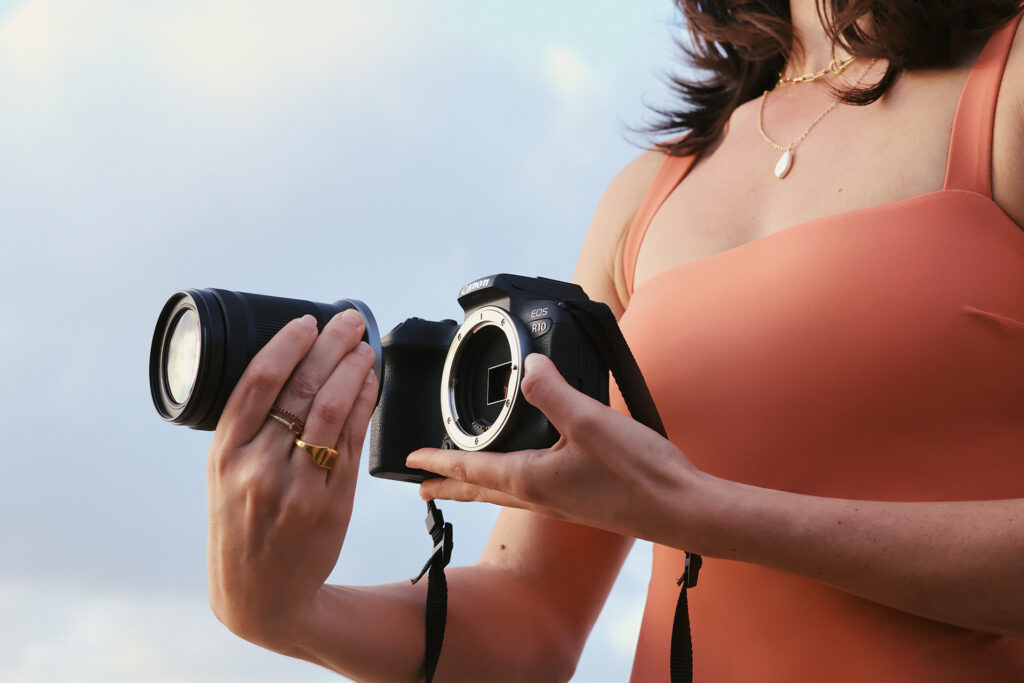
Another lens choice vloggers face is prime versus zoom. Prime lenses have a fixed focal length, limiting them to a single field of view, and tend to have larger apertures. The larger the aperture (that is, the lower the f-number), the more light enters the lens, which means improved image quality in low-light conditions. Large apertures also make achieving a narrow depth of field easier, so if you want to shoot video with the subject in sharp focus against a blurred background, a prime might be the best choice.
Prime lenses are often optically sharper than zooms, and physically smaller and lighter. If you usually vlog from a single position and want to keep image quality at its highest, then a prime lens might make the most sense. For full-frame EOS R System cameras, the RF24mm F1.8 MACRO IS STM is a great choice – it’s small and lightweight, it’s wide enough for indoor vlogging, and its f/1.8 aperture is excellent for blurring backgrounds and shooting in darker environments.
Zoom lenses tend to be larger because of the extra moving parts required, but their versatility can be useful if you’re shooting from a variety of distances and in different locations. A zoom lens with a big range of focal lengths such as the RF24-105mm F4-7.1 IS USM will let you shoot at both wide angle and telephoto without requiring a lens swap, so you don’t have to carry extra lenses around with you.
4. Decide your resolution and frame rate
However creative your content may be, if the footage lacks detail, it’s worth improving. Look for cameras with Full HD or 4K video – Full HD is a good standard to set, but 4K will give you even more detail, allowing you to crop and stabilise your footage without compromising quality. Shooting in 4K doesn’t mean you have to publish in 4K, of course, but remember that 4K footage will take more time to edit and upload.
The most important thing to consider is what frame rate will suit your subject. A smooth 60 frames per second (fps) is best for action vlogs and will give you an option to do slow-motion effects. 30fps or 25fps will be fine for everything else. For even more detailed slow-motion footage, the EOS R7 and the EOS R10 offer fast frame rates up to 120fps when shooting in Full HD.
5. Keep your footage steady and in focus
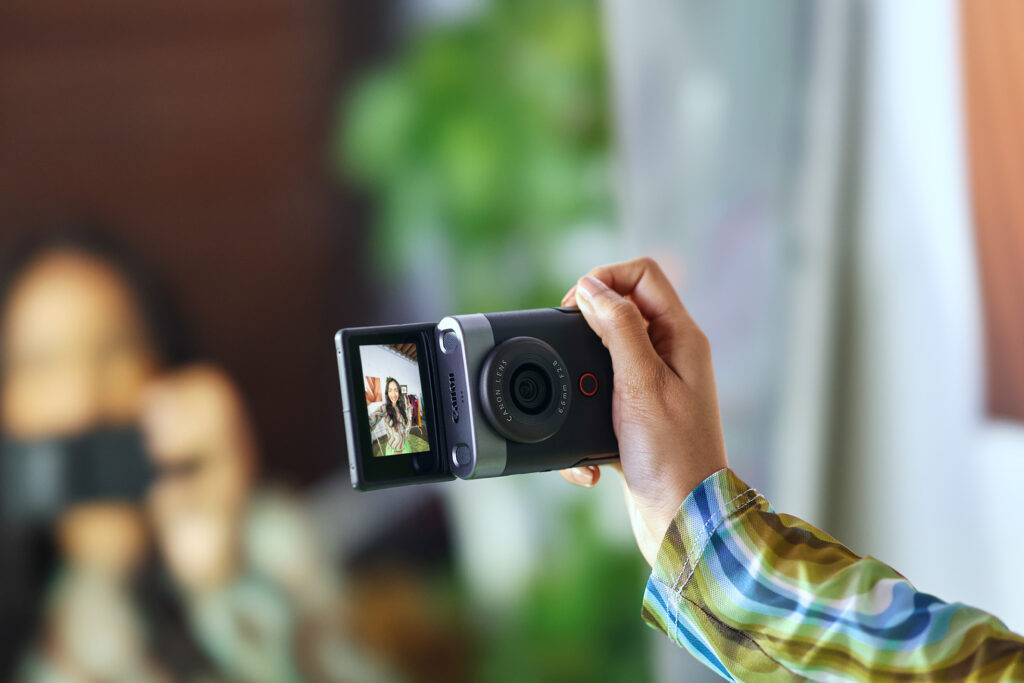
The compact size and light weight of Canon vlogging cameras such as the Canon PowerShot V10, Canon EOS R100 and Canon EOS R10 make them ideal for recording movement. A captivating vlog should take the audience on a journey with you – whether it’s through a city’s cobbled streets or showing your reaction to unwrapping your latest purchase – and movement can be key to that. Rather than shaky, distracting footage, make sure your shots are smooth so that viewers can focus on your exciting location or interesting story.
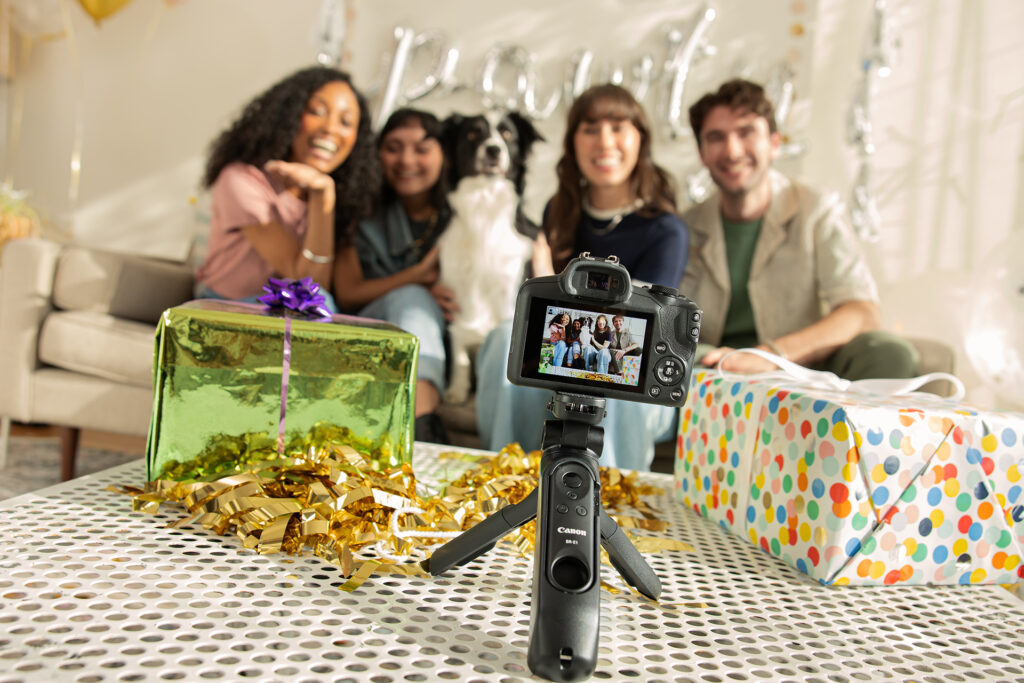
To keep shots steady, support the camera from underneath with the palm of your hand and grip it at the side. If you need extra support, a grip accessory that attaches to the camera body, giving you something to hold on to, can be a useful addition.
Technology can help a lot: for crisp and steady movies, use a lens with image stabilisation or a camera that features some form of IS. The PowerShot G7 X Mark III‘s 5-axis, Dynamic IS is designed to counteract camera shake even when you’re running, panning or shooting at full zoom. Some EOS R System cameras have sensor-shifting In-body Image Stabilisation (IBIS), which steadies the image no matter what lens is attached, but when you use a lens with optical IS on a camera with IBIS, the two IS systems work in tandem to tackle a wider range of vibrations than one system alone would correct.
As a vlogger, your face is the thing people will look at, so keeping it in focus is crucial. Canon’s Face Detection and Eye Detection technology can automatically track your face and keep it in focus.
6. Pan with purpose
Moving the camera horizontally during shooting, or ‘panning ‘, will allow your audience to see through your eyes – to be there with you as you look across a sweeping bay or a skyline filled with eye-catching buildings. Excessive panning can be disorienting, but when done in moderation it can add interest and drive the narrative.
Use panning sparingly, without rushing, and keep horizons level. Some cameras, such as the Canon EOS R10, are equipped with a level indicator that helps you to do this. The IBIS in the latest EOS R System cameras, such as the EOS R7, also facilitates auto-levelling. If you don’t have a tripod, place the camera on something stable – such as the edge of a bench or a table – and move it steadily, with purpose, to the side.
7. Plug in an external mic for better sound quality
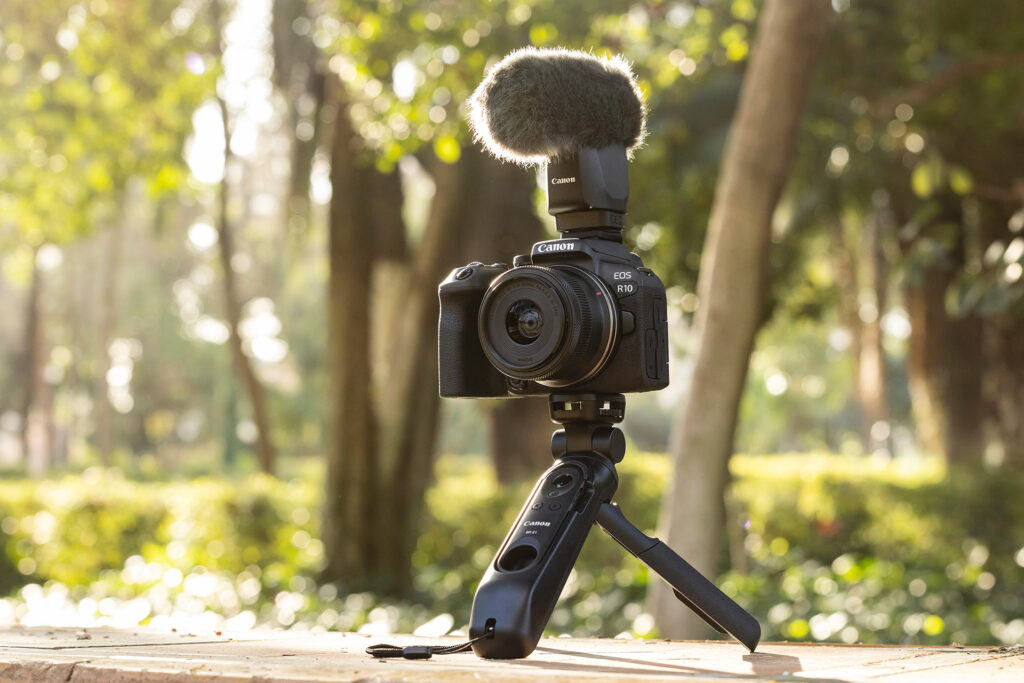
The Canon DM-E1D stereo microphone is all-digital, cordless and powered directly from the camera itself, and it can be set to three directions (shotgun, 90° or 120º). It’s an effective way to boost audio quality, and compatible with all cameras that have a Multi-Function shoe – including the EOS R3, EOS R7 and EOS R10.
Most cameras that shoot video will offer acceptable sound quality, particularly the latest models such as the EOS R7 and EOS R10, but if excellent sound is important to your vlogging, consider plugging in an external microphone. An external mic is particularly useful when you’re working outside, because the camera’s built-in mic is likely to record distracting background noise such as wind, whereas you can reposition external mics to help block this out. Some cameras have a built-in Wind Filter feature to reduce wind noise captured by the internal mic, but this also reduces bass sounds, so often gives you less natural sound than a well-positioned external mic.
If you want to use an external mic, look for a camera with an external mic socket, such as the EOS R7, EOS R10 or EOS R100.
8. Use Wi-Fi for sharing
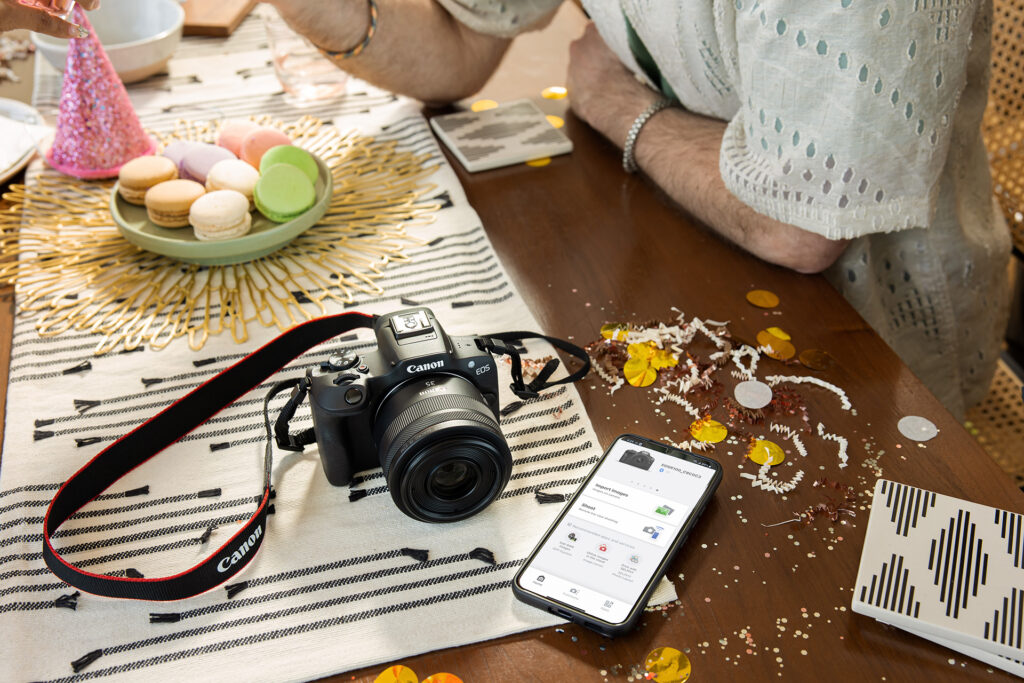
Many cameras on the market today, including the Canon EOS R100 and the Canon EOS R7, provide integrated Wi-Fi and Bluetooth, giving you the ability to share and back up wirelessly wherever you are in the world. With compatible Wi-Fi enabled Canon cameras, when connected to the internet, the image.canon service offers seamless transfer of images and movies to the cloud, where they are securely stored and can be automatically forwarded to your devices and web services.
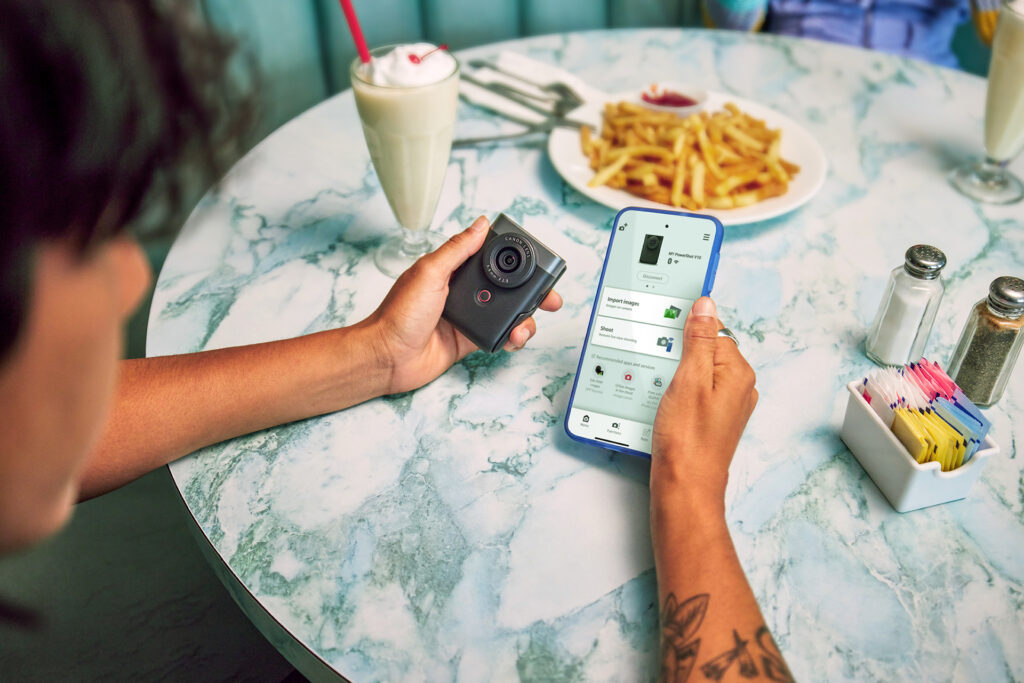
The Canon PowerShot V10 has Bluetooth and Wi-Fi for an always-on link with your smart device – plus, connect via Wi-Fi to your smart device or network with internet access and you can Live Stream to your YouTube¹ channel.
1. The live streaming service of this product supports live streaming on YouTube only. To use the live streaming service, registration on image.canon is needed in advance.
In accordance with YouTube’s “Restrictions on live streaming”, users must have a minimum of 1,000 channel subscribers in order to live stream from a mobile device. This restriction also applies to the YouTube live-streaming service available via the Canon PowerShot G7 X Mark III.
For up-to-date information on restrictions, please visit Google support.
Live streaming on YouTube may change, stop, or terminate without notice.
Please note in advance that Canon does not assume any responsibility for services provided by third parties, including live streaming on YouTube.







